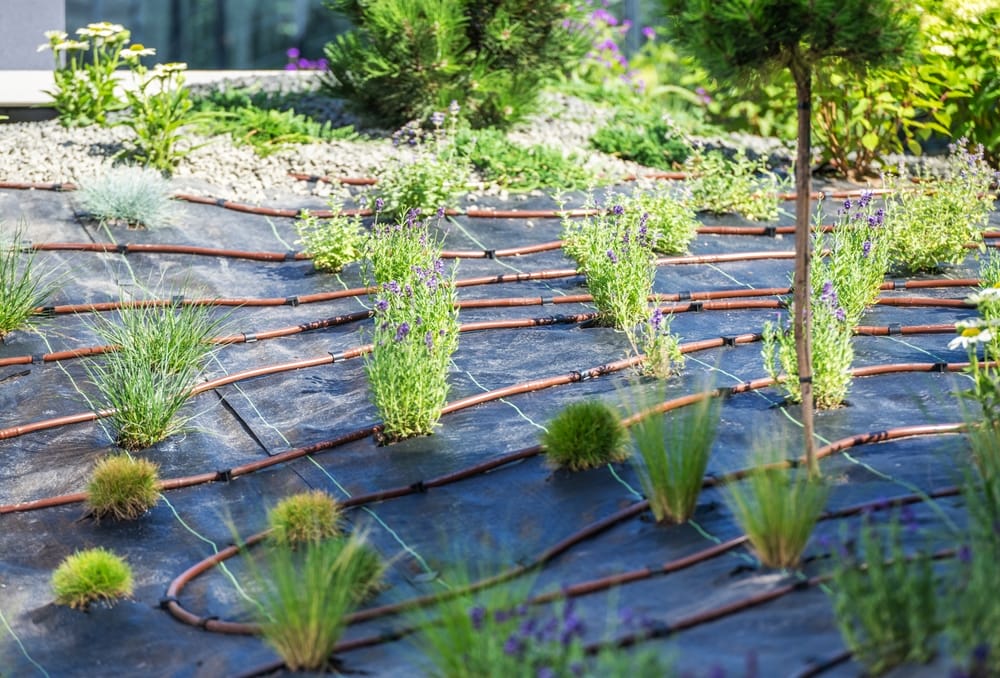
Image Source: Shutterstock.com
Winter is coming. And if you have an irrigation system, it’s not just a Game of Thrones metaphor—it’s a reality check that can make or break your spring garden. Water left inside pipes when temperatures drop can freeze, expand, and turn your expensive irrigation setup into a burst pipe disaster.
The scary part? Many homeowners don’t realize the simple step that can prevent this catastrophe. It’s not fancy. It’s not expensive. But without it, your sprinklers, drip lines, and underground pipes are at the mercy of winter’s icy grip.
Why Draining Your Irrigation System Is Non-Negotiable
Before you even think about frost blankets or covering your backflow valves, your irrigation system needs to be emptied of water. Any liquid left inside the pipes is a ticking time bomb. Water expands when it freezes, and even a tiny bit trapped in a narrow PVC pipe can create enough pressure to rupture the line. Broken pipes don’t just leak; they can spray water under your foundation, ruin landscaping, and leave you with a plumbing headache come spring. Taking the time to drain everything now is like buying insurance you hope you never have to use—but when winter hits, you’ll be grateful you did.
The Best Method To Blow Out Your Pipes
Using compressed air to blow out your irrigation system is the gold standard for winter preparation. Hooking up an air compressor to your main line and carefully forcing water out of every sprinkler head removes the liquid that could freeze and expand. It’s important to keep the pressure within safe limits; too much and you risk damaging your pipes instead of saving them. While it may feel like a high-tech task, anyone with patience and a bit of mechanical curiosity can do it. Once you hear the last hissing spurt of air escape, you’ll know your system is ready to face the cold.
Why Partial Draining Isn’t Good Enough
Some people think they can skip a few valves or leave low spots with water and nothing will happen. That’s a gamble your irrigation system might not survive. Even a small puddle of water trapped at the end of a line can freeze solid and create a crack, turning a minor repair into a major headache.
Winter doesn’t negotiate, and it doesn’t care if you skipped that tricky corner of your backyard. If you want your system intact, every pipe, valve, and sprinkler head needs to be completely clear of water.
The Role Of Backflow Prevention In Winter
Backflow preventers are essential for protecting your household water from contamination, but they are also vulnerable to freezing. Water left inside the unit can expand and damage its internal mechanisms, potentially ruining the entire assembly. Winterizing your irrigation system means treating the backflow preventer as seriously as your pipes—draining it thoroughly or using a protective cover. Some homeowners even use specialized insulating foam or blankets to keep these units safe during cold snaps. Remember, one broken backflow preventer can mean expensive repairs and weeks of frustration.

Image Source: Shutterstock.com
How Timing Can Save You Money And Stress
The key to winterizing your irrigation system is doing it at the right time. Waiting until the first frost can be risky, but starting too early might leave your lawn dry if warm snaps occur unexpectedly. The goal is to drain and blow out the system once you’re confident that freezing temperatures are imminent, but not weeks in advance. Watching your local weather forecast closely and planning a weekend for the task ensures you’re covered. Doing this at the right time prevents damage, preserves water pressure integrity, and saves you from emergency service calls in freezing conditions.
DIY Winterization Tips That Actually Work
While professional help is always an option, winterizing your irrigation system yourself can be surprisingly simple and satisfying. Start by turning off the main water supply and opening all drain valves. Use your air compressor carefully, moving from the farthest sprinkler head back toward the main line to ensure complete drainage. Don’t forget to check low spots or uneven terrain where water naturally collects. A little effort now keeps your system intact and your spring schedule uninterrupted.
Common Mistakes To Avoid
Even seasoned DIYers can make critical mistakes when winterizing irrigation systems. One common error is not relieving pressure before connecting the air compressor, which can create dangerous bursts. Another is skipping inspection of valves and sprinkler heads, leaving weak spots vulnerable. Forgetting the backflow preventer or thinking a simple cover is enough is also a frequent misstep. Finally, rushing through the process often leads to incomplete drainage and costly repairs. Awareness and methodical execution are what separate a winterized system from a frozen disaster.
Don’t Let Your Irrigation System Become A Winter Casualty
Your irrigation system is an investment, and one simple step can prevent it from becoming a winter casualty. Draining and properly winterizing your pipes, valves, and sprinkler heads isn’t glamorous, but it’s essential. The cold doesn’t negotiate, and a frozen system can lead to significant headaches and expenses when spring arrives.
Have you ever faced a winter irrigation mishap, or do you have tips that work wonders for freezing temperatures?
You May Also Like…
Plan Next Year’s Garden Now — Your Future Self Will Be Grateful
8 Flowers to Dry for Winter Bouquets
7 Native Shrubs to Plant Before the Ground Freezes
Why Soil Tilth Improves After Frost
The Forgotten Step That Protects Outdoor Faucets and Hoses from Cracking
Leave a Reply